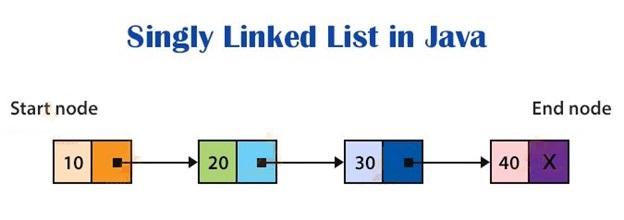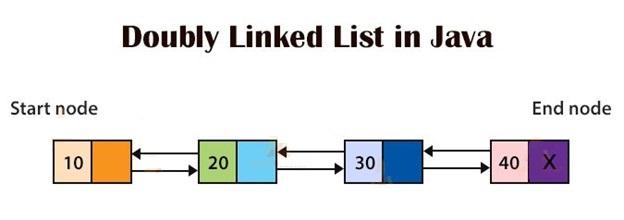Don’t Neglect Data Structures To Succeed In The World Of Java Programming
Data Structure Is One Of The Most Important Concepts In The World Of Programming, Which Plays An Influential Role In The Success Of Applications.
All applications that use data structures implement them in different ways. The topic of data structure is so crucial that all major universities worldwide have developed dedicated chapters for teaching this concept.
Interestingly, prominent educational institutions have also developed dedicated videos for working with data structures in different programming languages. Successful programmers are all familiar with this concept in the world of Java programming.
Hence, if you are planning to enter the world of Java programming, you should spend significant time learning data structures.
What is a data structure in Java, and why do we need it?
Data structure refers to different data storage methods in computer systems. Data structures are tools for efficiently managing large amounts of data so that data can be accessed and edited optimally. Data structures help to write algorithms with less time complexity and better execution order.
When writing an optimal algorithm, we must pay attention to the memory and time consumption criteria so that the work output is acceptable. For this reason, we must have complete information about different types of data structures.
Data structures in programming languages such as Java are an efficient tool for managing large amounts of data and are used in almost all large applications such as operating systems, artificial intelligence applications, compiler design, etc.
Today, applications are connected with a large amount of data, and this has doubled the complexity of these applications and created many challenges for applications and programmers, the most important of which are the following:
- Processing Speed: As the volume of data increases, the speed of management and processing must also increase. Today’s processors can process large amounts of data in a short time and must write efficient algorithms to achieve such a goal.
- Searching Data: Imagine an online store that has more than 200,000 products. If a program intends to search for a specific product based on certain conditions, the program must check the specifications of 200,000 products to return the result. It will slow down the search.
- Multiple requests simultaneously: Imagine that millions of users are searching for data simultaneously on the web server; it is natural that the probability of server problems increases.
To solve the above problems, developers use data structures in programming languages such as Java. In the Java data structure, data is stored and managed so that the data can access in the shortest possible time during the search.
What is the advantage of data structures in Java?
As we mentioned, using data structures helps to manage data better and solve some of the problems mentioned in the previous paragraph. However, Java programmers use data structures in Java for the following reasons :
- Efficiency: The data structure in Java significantly improves the performance of applications by structuring data, as they allow data to be stored in the smallest possible space and processed at high speed.
- Reusability: Reusability of data is one of the most important reasons for using data structures. After implementing a particular data structure, it can use in different parts of an application. In addition, it is possible to define the data structure in libraries and use it in different ways in other applications.
- Abstraction: In Java, the abstract data type ADT is used to specify the data structure. In the mentioned method, developers can use the data structure in Java with the help of interfaces (Interface) in applications without getting involved in the details of the data structure implementation for no reason. The abstract data type provides the highest level of detail hiding.
Classification of data structures in Java
In general, data structures in the Java programming language are divided into linear and non-linear data structures, which some sources call hierarchical data structures. They have their subcategories. Figure 1 shows the above classification.
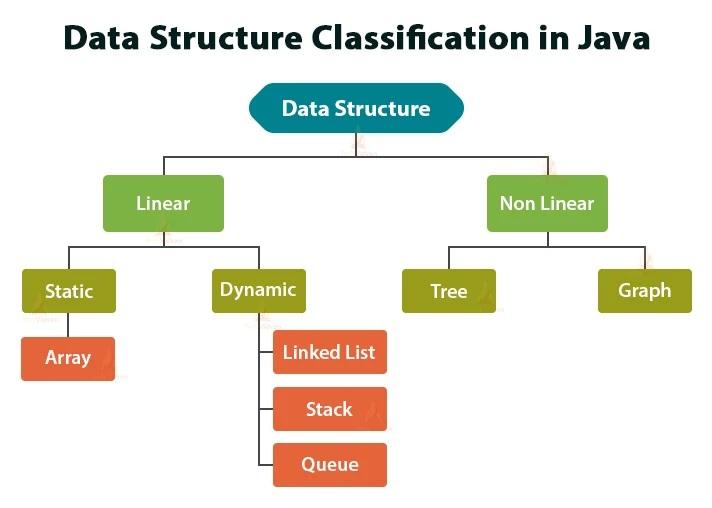
figure 1
- Linear Data Structures: All elements are arranged in linear or sequential order in a linear data structure. The linear data structure is a single-level data structure (Single Level Data Structure) in which the elements are sequentially arranged.
- Non-Linear Data Structures: In a non-linear data structure, data is not sequentially arranged and stored like linear data structures. For this reason, non-linear data structures are multi-level data structures.
Types of data structures in Java
The primary data structures in the Java programming language are the following:
- Arrays
- Linked Lists
- Stack
- Queue
- Graph
- Set
The array data structure in Java
The array is a linear and static data structure representing a group of similar elements that indexes can access. The first address of the variety belongs to the first element, and the last address belongs to the last piece of the collection. Usually, the size of an exhibition in Java is determined before the data is stored in it.
An array is the simplest data structure, a collection of elements of the same type, referred to by a common name. The first address of the exhibition refers to the first element, and the last address refers to the previous component of the display. Collections contain simple data of the same type, such as Integer, Float, or User Defined Data. Also, all parts have the same size. Arrays are stored in contiguous memory locations, and data allocation is done from the smallest detail of the memory location allocated to the collection.
When using arrays, you should pay attention to several important points:
- Arrays can be data elements of simple and similar types such as int or float or user-defined data types such as structs and objects.
- Arrays are considered objects in Java.
- Indexing (indexing) of array values starts with zero.
- Before using arrays, we need to define them to store data.
- The storage location of arrays in Java is dynamically allocated in the Heap area.
- The length of the arrays is done using the Length method.
- The size of the array must be an integer value (Int).
- Random access to array elements is possible in Java.
Arrays in Java can be one-dimensional, two-dimensional, or multi-dimensional. As the number of dimensions of the array increases, the complexity of definition and access to data increases, and significant memory is consumed. Figure 3 shows one-dimensional arrays.
In Figure 3, you can see the first element and index on the left and the last component and index on the right. Pay attention; the access to the array elements in Figure 3 starts with zero and ends with the value of 4. Here, index zero refers to the value 126, index one to the value 32, index two to the value 230, index three to the value 21, and index four to the value 200.

Figure 3
Typically, we use arrays when we know the number of elements and the size in advance because memory is reserved for arrays before processing. For this reason, arrays are classified as static data structures. One of the essential points to be aware of when using arrays is time complexity. The time complexity for performing various operations on arrays is as follows:
- Access to elements: O(1)
- Sequential search: O(n)
- Binary search if the array is ordered: O(log n)
- Add: O(n)
- Delete: O(n)
Linked List in Java
A linked list in Java is a linear and dynamic data structure that hosts a collection of similar types of data elements called nodes. This type of data structure stores two types of data simultaneously. The first type is the actual value used in the program, and the second type is a pointer to the location of the next element in the list. The first node in the linked list is called Head, and the last node is called Tail. The last part refers to Null and means the end of the linked list.
Linked lists in Java were designed to solve some problems with arrays. For example, in this type of data structure, there is no need to define the number of elements before using them, so the memory allocation process can be done at runtime and as needed. In addition, inserting and removing components in linked lists is done more straightforwardly. In Java, linked lists can be one-way, two-way, and circular.
Singly Linked List
- As shown in Figure 4, adding values in linked lists is based on a forward, one-way movement. This linked list has a node and a single pointer that points to the next node.
Figure 4
Doubly Linked List
- Both forward and backward linked lists can receive data. For this reason, it has two pointers, one of which points to the previous node and the other to the next node. In two-way linked lists, it is possible to navigate from both sides of the list. Figure 5 shows doubly linked lists.
Figure 5
Circular Linked List
- In a circular linked list, the nodes are connected circularly. No null nodes exist in this linked list, and any node can be defined as the first node. Also, pay attention to the critical point that doubly linked lists are a good option for implementing rotating queues. Figure 6 shows a circular linked list.
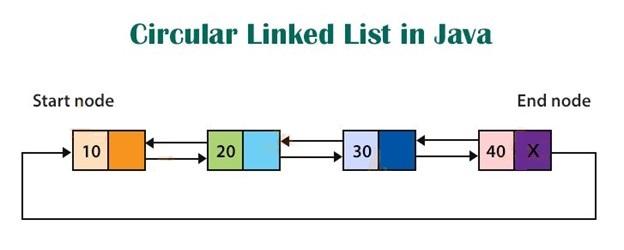
Figure 6
The time complexity of various operations on linked lists is as follows:
- Traversing elements: O(n)
- Searching for a component: O(n)
- Add: O(1)
- Delete: O(1)
Everyday operations applicable to linked lists include merging two linked lists, splitting lists, and reversing the list.
Stack in Java programming language
Stack is an abstract data structure in Java. A stack is a collection of objects that are added and deleted based on the principle of “Last In First Out” (LIFO). Things can add to the stack anytime, but only the most recently added object can remove anytime. When a stack is defined as an array or a linked list, it inherits all the properties of the collection or linked list. Figure 7 shows the stack.
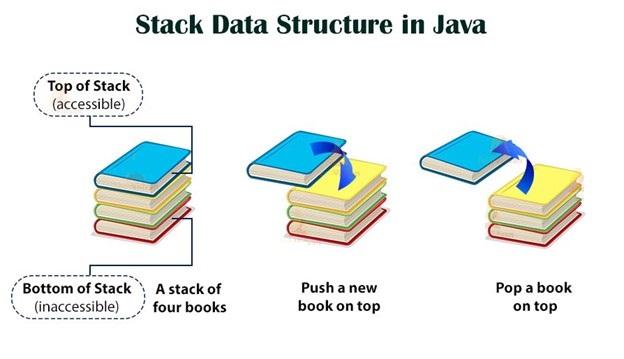
Figure 7
Note that the Java programming language stack is an ordered list that only supports insertion and deletion operations from only one section, and that is at the top of the stack. In general, piles perform operations such as calling nested functions, solving mazes, matching parentheses, etc. The operations performed on the stack are as follows:
- Push(): Adds an element to the top of the stack.
- Pop(): Removes a part from the top of the stack and returns the removed element from the stack.
- Peek(): Declares or retrieves the top component of the stack without removing it. Sometimes this method is called top ().
- Queue in Java programming language
The queue is another widely used data structure in Java, which is the opposite of the tack. A line is a collection of objects that performs the process of adding and removing objects based on the principle of “First In, First Out” (FIFO). In the queue data structure, the addition process is always done from the end (Rear) and deletions from the beginning (Front) of the queue. Figure 8 shows the queue data structure in Java.
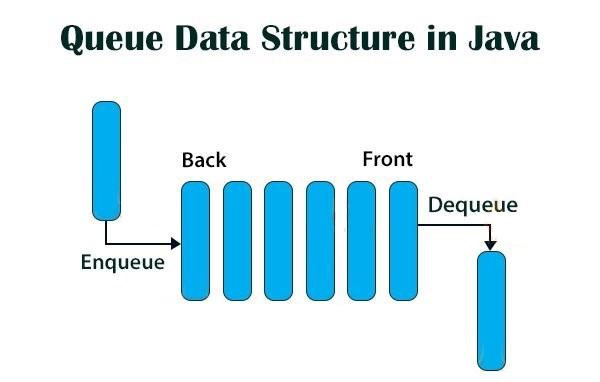
Figure 8
Joint operations on queues include the following:
- () Enqueue: adding an element to the end of the string.
- Dequeue(): Returns the first element of the column and deletes it.
The queue is usually used for Breadth First Searching in specific data structures such as trees and graphs. Columns are used in managing the scheduling of processes in multitasking operating systems, scheduling algorithms, round-robin scheduling algorithms, and similar cases. Also, they are a suitable option for transferring data between two approaches asynchronously.
Developers can use queues in many different ways in their applications. However, two types of columns widely used in Java are circular queues and double-ended queues. Circular lines are implemented and defined in a circular path. The advantage of this data-building model is that it solves the problem of unused spaces in simple and linear queues. A two-way column in Java allows adding and removing elements from both sides of the column but not from the middle of the row.
The graph data structure in Java
A graph is a non-linear data structure in the Java programming language, which is made up of the following components:
- A finite set of vertices is known as nodes.
- Edges are represented by a finite set of ordered pairs in the form (e, v). Here v represents the number of vertices, and e represents the number of edges.
- The graph data structure in Java is divided into two groups, directed graph and weight graph, based on its parameters.
- The path graph data structure divides graphs into two groups: Directed Graph and Undirected Graph.
- A directed graph is a set of nodes or vertices connected, where all edges have a direction from one vertex to another.
- The weighted graph data structure divides graphs into two groups: weighted charts and unweighted graphs.
- A weighted graph data structure is a graph in which each edge has a weight. This graph is also known as a labeled graph.
- In the unweighted graph data structure, no weight is considered for the edges.
Set
A collection is a unique data structure that differs significantly from other examples because it does not support duplicate values. This data structure is used in Java to store individual elements such as a unique user identifier (ID) (Figure 9). It can implement The set data structure in various ways in Java; the most important are Linked Hash Set, Hash Set, and Tree Set. These data structures are defined through Java application programming interfaces (Java Collection API).
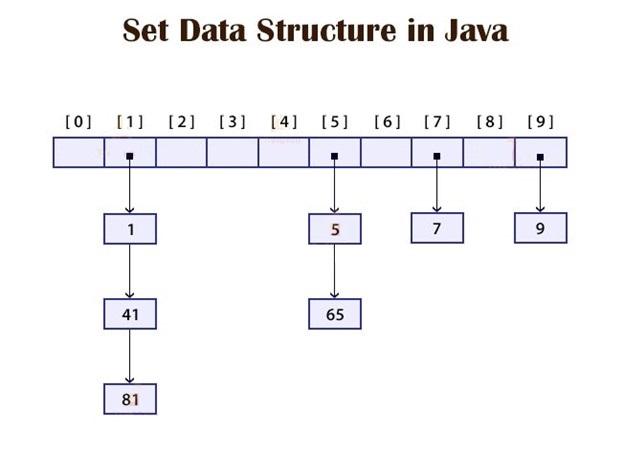
Figure 9
last word
We tried to introduce you to the most important data structures for storing and organizing data in the Java programming language. This article taught us about some critical Java data structures like arrays, linked lists, stacks, queues, graphs, and collections.
Now that you have basic information about data structures in Java and know what features each of these data structures have in Java and what they are suitable for doing, you should spend some time and learn how to implement each of these data structures in practice.

